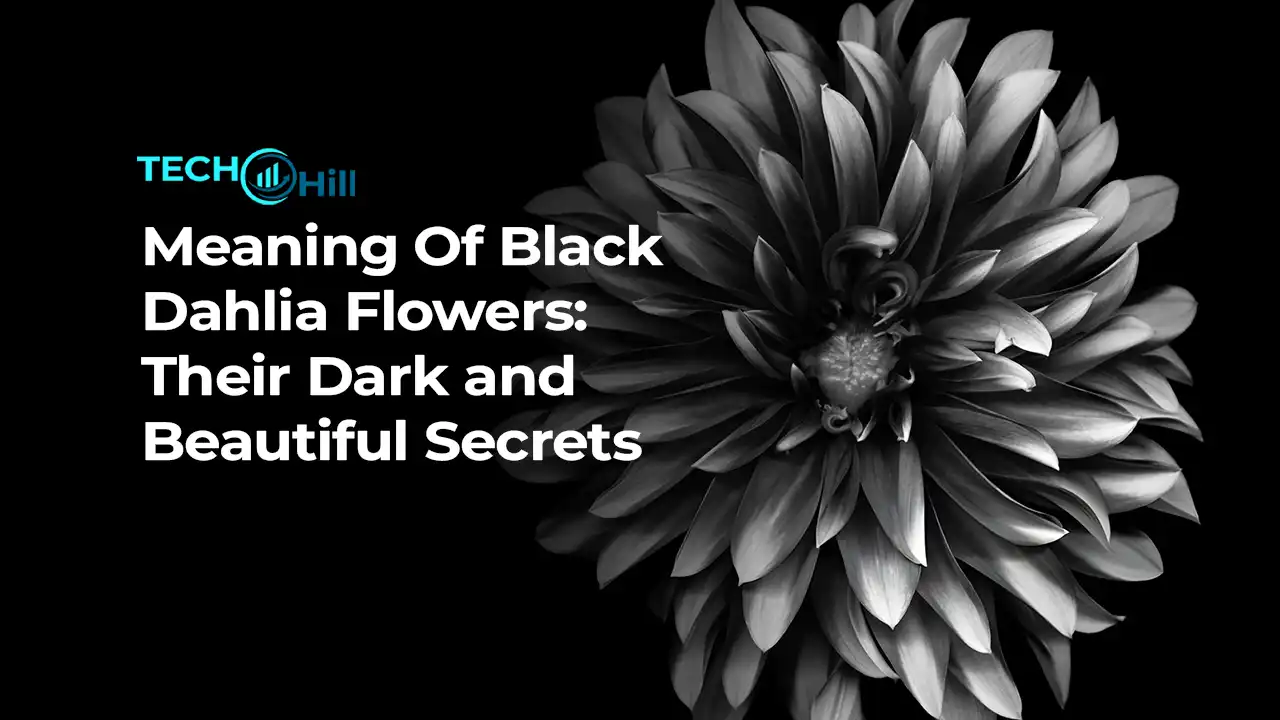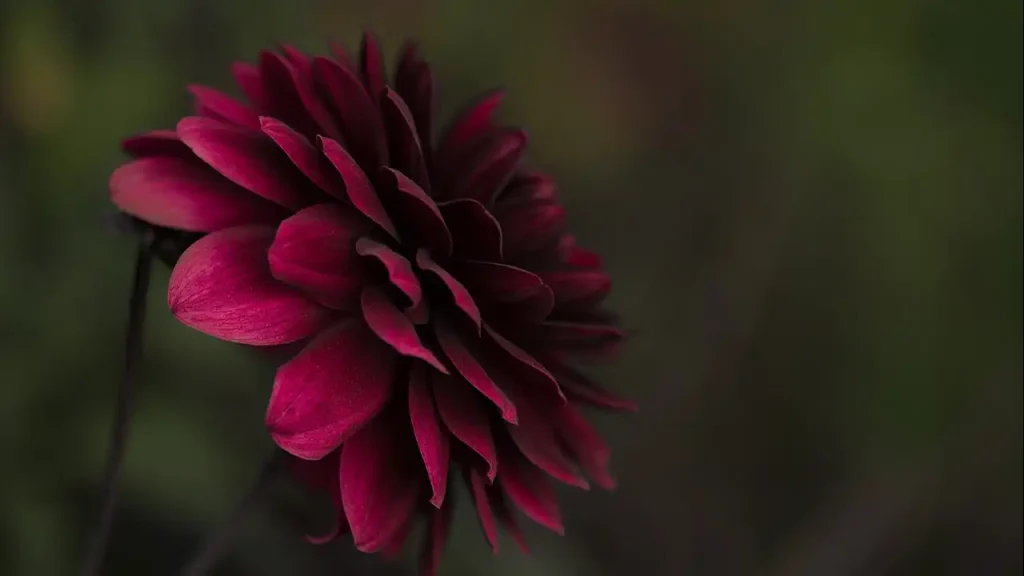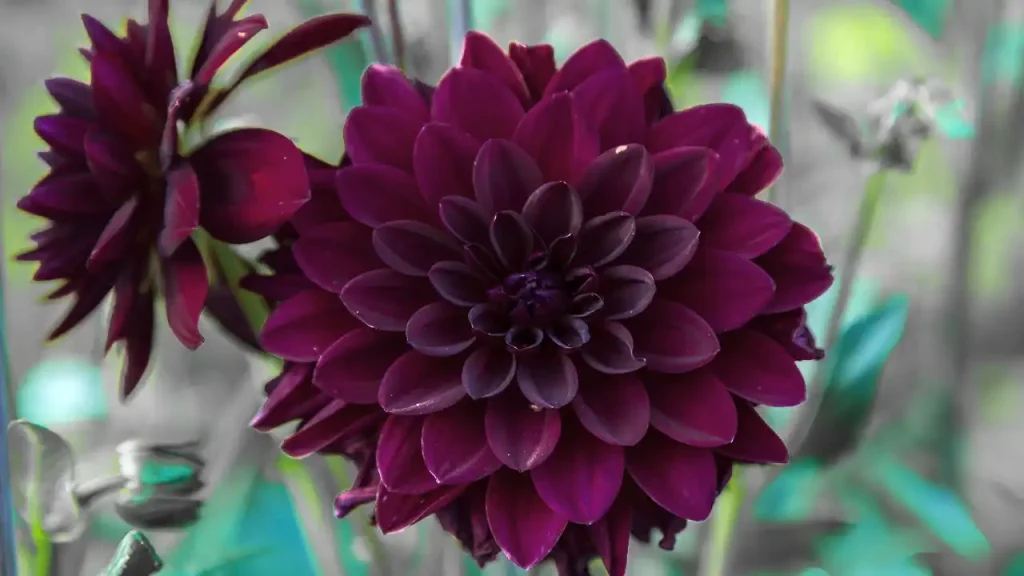Meaning Of Black Dahlia Flowers: Their Dark and Beautiful Secrets

What is a Dahlia Flower?
The dahlia is a genus of plants that falls under the family Asteraceae, distinguished by its vibrant display of pinnate leaves and symmetrical Black Dahlia flowers that span a rainbow of colors. Originating from the mountainous regions of Central America and Mexico, the dahlia was first discovered by Spanish botanists in the 18th century, who were mesmerized by its stunning diversity and beauty. Known for their varied forms and sizes, dahlia flowers can range from petite pompons to striking dinner-plate-sized blossoms.
Dahlias are perennial plants, thriving in well-drained, fertile soil and full exposure to the sun. They are particularly noted for their extended flowering period, often blooming from midsummer until the first frosts of fall, offering a prolonged spectacle of color in gardens.
With over 42 species and thousands of cultivars, dahlias are a favorite among horticulturists and floral enthusiasts alike for their reliability, their dramatic blooms, and their ability to attract pollinators such as bees and butterflies. Each variety, including the mysterious black dahlia, carries its own unique charm and symbolism, making it a beloved addition to both personal gardens and cultural narratives around the world.
Key Visual Characteristics of Dahlias
Dahlias are a visual feast, celebrated for their dynamic range and breathtaking beauty which make them standouts in any garden. Here are the key visual characteristics that define dahlias:
- Variety in Size: Dahlias come in an array of sizes, from small, delicate blooms about 2 inches in diameter to spectacular dinner plate varieties that can reach up to 12 inches across.
- Diversity of Flower Shapes: The structure of dahlia flowers varies widely, including decorative, ball, cactus, pompon, and waterlily forms, among others. This diversity allows for a rich tapestry of textures within the garden.
- Color Spectrum: Perhaps the most striking feature of dahlias is their color palette. They are available in almost every color imaginable, except for true blue. The colors can be vibrant and rich, pastel, or even multicolored with variegated stripes and speckles.
- Petals: The petals of dahlias can vary from being spiky and tubular in cactus dahlias to smooth and rounded in decorative varieties. Some dahlias feature tightly rolled petals while others are broad and flat, offering different visual textures.
- Stems and Leaves: Dahlias typically have sturdy, elongated stems which make them ideal for cut flower arrangements. The foliage varies from deep green to burgundy, which adds further contrast and appeal to their overall presentation.
- Growth Habit: Depending on the variety, dahlias can range in height from as short as 12 inches to as tall as 6-8 feet. Their robust stems support the heavy flower heads and help maintain their upright growth habit, making them excellent for back borders or central displays in garden settings.
The Origin of Dahlia Flowers
The dahlia flower boasts a rich history that spans continents and cultures, originating from the volcanic highlands of Mexico and Central America. This beautiful flower was first cultivated by the Aztecs who held it in high regard, not only for its striking appearance but also for its medicinal properties and practical uses. They used the long hollow stems of the (tree) dahlia for water pipes and the tubers were grown as a food crop, similar to the role potatoes play in other parts of the world.

In 1789, the dahlia made its journey to the Royal Botanic Gardens in Madrid, courtesy of Spanish botanists who were sent to Mexico to study the region’s flora. It was named after the Swedish botanist Anders Dahl, a student of Carl Linnaeus. Initially, dahlias were grown only within botanical gardens as a novelty due to their unique and striking appearance. However, they soon captured the interest of European horticulturalists, who began breeding them to enhance their beauty.
Throughout the 19th century, dahlias became a symbol of elegance and innovation in the gardening world as breeding programs in Europe and the United States produced a dazzling array of forms, sizes, and colors. The enthusiasm for dahlia cultivation led to what was known as “dahlia mania” during the Victorian era. This flower was so beloved that societies and competitions sprung up around its cultivation, a tradition that continues to this day with numerous dahlia shows and contests held annually across the globe.
What is a Black Dahlia? Do Black Dahlia Flowers Really Exist?
The term “black dahlia” often stirs a sense of deep intrigue and mystery, largely due to its association with both a famous Hollywood crime and its striking appearance. When it comes to the existence of truly black dahlias, it’s essential to understand that what is commonly referred to as “black” in the floral world is often a very deep burgundy or purple hue, so deep that the flowers appear black under certain lighting conditions.

The black dahlia is not a specific variety but a descriptive term used for several dahlia cultivars that exhibit these dark, velvety petals. These varieties include ‘Black Dahlia’, ‘Blackberry Ripple’, ‘Nuit d’Été’, and ‘Arabian Night’, among others. Each of these cultivars showcases blossoms so deeply colored that they challenge the perception of what a flower can look like.
Visual Characteristics
These “black” dahlias typically feature the following:
- Deep, Rich Colors: The petals may range from deep maroon to a near-black, chocolate hue.
- Velvety Texture: The petals often have a velvety sheen that enhances their dark color, making them appear even more profound when contrasted with lighter or brighter blooms.
- Striking Form: Like all dahlias, these dark varieties come in several shapes, including the dramatic cactus form, which adds to their mysterious allure.
Symbolism
In terms of symbolism, black dahlias carry a unique and potent significance. They are often seen as symbols of commitment and dignity but also mystery and survival. They can represent a bold or rebellious spirit due to their stark contrast to more traditionally colored flowers.
Rarity and Cultivation
While not rare, these darker varieties of dahlias are less common than their brightly colored counterparts and can be a striking addition to any garden. They require the same growing conditions as other dahlias: well-drained soil, full sun, and regular watering.
Conclusion: The Enigmatic Allure of the Black Dahlia
The black dahlia, with its deep, almost mystical hues, stands as a captivating figure in the floral kingdom. Far more than just a garden variety, it embodies a rich tapestry of history, symbolism, and pure botanical beauty. From its roots in the ancient civilizations of Central America to its revered status in modern-day gardens, the dahlia has traversed a long journey, evolving into a symbol of elegance and resilience.
These dark dahlias, though not truly black, evoke a sense of mystery and sophistication that is unparalleled. They challenge the norms of floral coloration, bringing a dramatic flair to landscapes and bouquets alike. For gardeners and floral enthusiasts, cultivating these blooms offers an opportunity to partake in a living history, nurturing a piece of the botanical world that continues to tell its ancient stories in new and vibrant tones.
As we appreciate the beauty of these stunning flowers, we also connect with a tradition of cultivation that spans centuries and continents. The black dahlia reminds us that beauty often lies in the unique and the unusual, inviting us to explore the depths of nature’s diversity. In the garden of life, the black dahlia is not just a flower; it is a statement of depth, a celebration of the mysterious, and a testament to the enduring allure of nature’s wonders.
